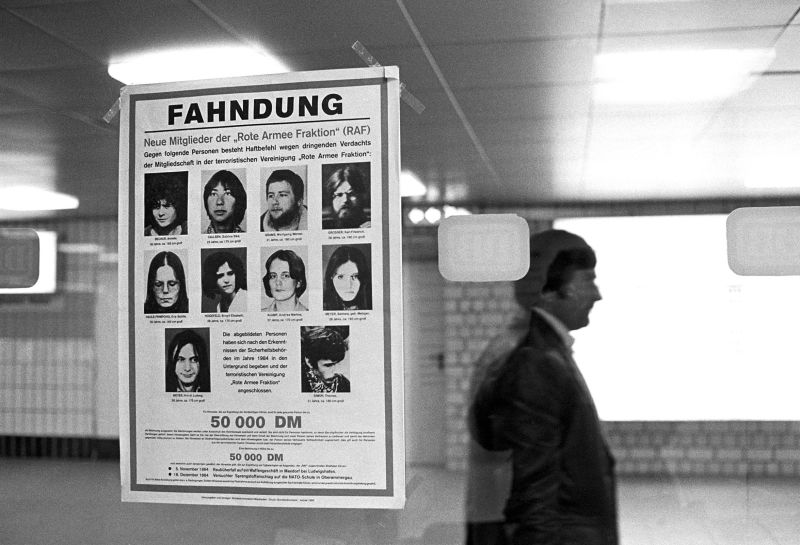Body
The Red Army Faction (RAF), a radical left-wing militant group, made international headlines during the 1970s and 1980s for its use of bombings, kidnappings, and assassinations as a means to voice its strong opposition to capitalist systems, Western imperialism, and the United States’ military presence in West Germany. The RAF’s notoriety was such that even decades after its dissolution at the end of the Cold War, several former members remain fugitives, wanted for unresolved crimes.
Formed in 1970, during one of the most tense periods of the Cold War, the RAF was born out of the student protest movement of the late 1960s. The group’s founders, Andreas Baader, Gudrun Ensslin, and Ulrike Meinhof, initially had established a counterculture that sought to challenge the ruling authority and social norms of West Germany, which they considered to be remnants of Nazi influences. However, this initial peaceful pursuit of social justice was later replaced by a more aggressive revolutionary agenda. The group then escalated into paramilitary action, using violence as a tool to provoke the collapse of what they perceived as a ‘fascist’ state.
The RAF mainly targeted establishments and individuals they believed were part of the capitalist-imperialist system that was oppressing the proletariat. These included government officials, leading industrialists, and US bases across West Germany. Among their most notable acts were the murders of Federal Prosecutor Siegfried Buback, the CEO of Dresdner Bank, Jürgen Ponto, and former SS officer Hanns Martin Schleyer.
The RAF officially disbanded in 1998, but its legacy continues to affect Germany. Even today, former RAF members are still at large, linked to a chain of crimes that were never formally resolved. According to the Federal Criminal Police Office of Germany, several members of the RAF’s third generation are fugitives, with outstanding arrest warrants. These former members are still wanted for multiple fatal attacks perpetrated during the 1980s and early 1990s.
Moreover, in 2016 and 2017, forensic experts identified DNA from two former RAF members, Ernst-Volker Staub and Burkhard Garweg, at the scenes of several robberies in northern Germany. Similarly, former RAF member, Rolf Clemens Wagner, was arrested in 1998, stunning Germany and demonstrating that the specter of the RAF was far from eradicated.
The existence of RAF fugitives is not merely an unresolved criminal case; it continues to serve as an open-ended chapter of Germany’s recent history and symbolizes the region’s continuing struggle with the ghosts of its past. While the majority of Germans born post-Cold War know the RAF only from history books, the continued search for the RAF’s fugitives serves as a stark reminder of the group’s violent past and brings this tumultuous history to the fore. Furthermore, the search is indicative of Germany’s pursuit of justice, no matter how many years have passed.
In recent years, the discussion around the RAF has also stirred debates around political extremism and the effectiveness of Germany’s ‘post-war democracy.’ It’s important to note how Germany’s grappling with these enduring figures from its past contrasts with other narratives of the Cold War.
The ongoing manhunt is not just about finding fugitives, but an exploration of national memory. The former members of the Red Army Faction are living ghosts of a past era. The fact that they remain on the run is symbolic of the unfinished business between the democratic Germany of today and its politically tumultuous past.




